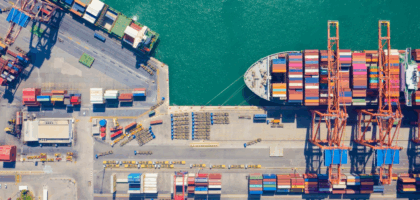We’re all human, which means mistakes happen. But when there’s a lack of knowledge or attempts to “cut corners” to speed things up, that’s where the costly mistakes tend to happen. Here are some of the most common logistics mistakes and how you can avoid them.
1. Lack of Planning and Organization
One of the most common mistakes in logistics is inadequate planning. Couple that with a lack of organization and you have a recipe for disaster.
Planning and organizational issues can be challenging for businesses of all types and sizes. Not only can they lead to delays, inventory shortages, and increased or unnecessary costs, but can essentially destroy a business. When your processes and core business functions are not coordinated with each other, it can create massive challenges from which you may not be able to recover.
How to avoid this mistake:
For planning purposes, make sure you establish an all-encompassing plan that includes accurate forecasting, inventory management, transportation schedules, and contingency plans for those unexpected events. Regularly review and adjust accordingly to fit current circumstances.
When it comes to staying organized, put SOPs in place both internally and externally. This will ensure that your employees know what to do and what your customers can expect from you. You should implement technology and systems that keep your internal data organized and up to date to make the soundest decisions for your business.
2. Insourcing Logistics Operations
Not every company requires outsourcing their logistics operations. But if you’re overwhelmed, have an overabundance of shipments, handle international or complex shipments, or lack the knowledge on how to navigate your supply chain efficiently and effectively, then outsourcing your logistics operations could be the answer for your business!
By keeping all your supply chain operations inside your company’s four walls, you may be causing unnecessary challenges that are wreaking havoc on your employees, your resources, and your bottom line.
How to avoid this mistake:
Don’t think you have to do it all yourself. Many businesses believe they can handle everything themselves and save a few dollars in the long run, but truth is, it can become quite daunting and very expensive quickly.
If you do your due diligence, interview logistics companies, and select a responsible freight forwarder with a good reputation, you will actually save yourself time and cut costs (and create efficiencies at the same time).
3. Use of Outdated Technology or Not Making Full Use of Technology
Gone are the days of pen and paper. Digitalization has become a necessity to run your business successfully in today’s world. If you aren’t utilizing technology or have implemented outdated technologies, it could cost you in the form of reduced efficiency and productivity, which could ultimately impact your customers.
How to avoid this mistake:
Technology can help streamline your logistics operation. There are many platforms and applications that can make your life much easier, including software programs that help track inventory levels and orders and GPS systems that can track shipments.
Invest in logistics management software and warehouse management systems to automate processes and analyze data. You can also look into emerging technologies like artificial intelligence (AI) and predictive analytics to enhance visibility, optimize routes, and improve decision-making.
4. Ignoring or Not Tracking Data
Data is one of the most valuable assets in any business, but particularly when it comes to logistics. Tracking analytics is a crucial way to manage your supply chain properly and ignoring your data can be a costly mistake.
If you continuously run your business the same way and never look at how it’s operating on a day-to-day basis, chances are, you’re losing money, time, and your customers without even knowing it! Without accurate data, it’s impossible to make informed decisions about your operation.
How to avoid this mistake:
When it comes to logistics, make sure you implement and track key performance indicators (KPIs), including inventory levels, order fulfillment rates, shipping/transit times, and order accuracy. Analyze historical and real-time data to uncover trends, identify bottlenecks, and reveal areas for improvement.
By keeping track of this data and utilizing some of the technologies we previously mentioned, you can make decisions based on facts and improve your operation on an ongoing basis.



